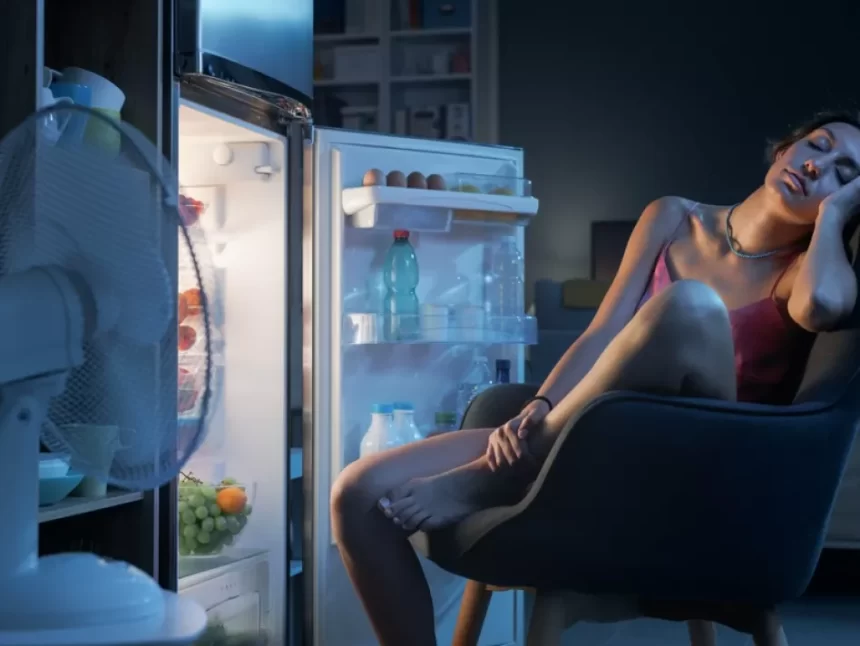Experts warn millions of Australian homes will be feeling the scorching summer heat as rising cost-of-living pressures stretch households to the financial limit.
A new report, Hothouse Australia: Our kids at risk as heat soars, found that millions of Aussie households, including over 760,000 children living in poverty in Australia, face heightened risks to their health from exposure to extreme summer heat.
According to researchers, around 3 in 4 lower-income households, who are already tightening their belts to keep food on the table, are also likely to cut back on the use of air conditioning and cooling appliances due to cost pressures despite living in poorly insulated and energy-inefficient homes.
The report also found that around 1 in 5 Australians can’t afford to cool their home at all.
For Western Sydney mum Rebecca De Marco, the financial strain of another heatwave might mean choosing between cranking the air-con or keeping the lights on.
“My first baby was born during the Black Summer fires. We were in a rental with no air conditioning, and the 40-degree heatwaves were a huge struggle,” said Ms De Marco.
“With another baby on the way, we’ve moved to a two-story rental in Western Sydney, and the heat is back.
“On 30-degree days we are only just able to cope. I’ve done everything I can with wet towels and so on, but on a warm day it gets to 30 degrees upstairs by the time we put our kids to bed at night.
“We’re only on one income at the moment, so we’re super careful with money. We’ve got pretty good at keeping bills down, but I know that won’t be the case this summer. When it gets above 30 degrees outside, we have no choice but to run the aircon all day.”
Aging Aussies are feeling the heat
But kids aren’t the only ones at risk. Extreme heat is also plaguing aging Aussies, with a recent report from the Australian Institute of Health and Welfare finding the scorching summer sun was responsible for 293 deaths and 7000 hospitalisations of people over 65 in the last decade.
These heatwave-related deaths dramatically spiked during El Niño years, with older Australians being the most commonly hospitalised age cohort of all those admitted to hospital for heat-related injuries.
With this summer’s similarly scorching conditions only just beginning, home cooling has become more important than ever over the coming months.
Cooling the future
Without action, experts say this cooling crisis will only get worse. By 2050, millions of Australians will face severe and extreme heat that risks their life and health thanks to global warming and worsening climate conditions.
In response to the damning findings, the report’s authors, Parents for Climate and Sweltering Cities, are calling on the federal government to work with the states to protect the most vulnerable Australians from the twin threats of rising heat and rising costs.
They propose several initiatives, including the rollout of efficient reverse-cycle air conditioning units powered by rooftop solar panels in all low-income households and better thermal insulation to stop Aussies from sweltering in unsafe homes.
Parents for Climate CEO Nic Seton said it’s up to the Australians of today to protect the children who will pay the highest price of rising temperatures.
“Too many families who are struggling with rising costs of living are unable to afford to keep their homes heat safe,” he said.
“Hot homes and schools can damage our kids’ health and make their lives harder now and into the future. Simple measures such as installing energy-efficient air-conditioning powered by rooftop solar in homes and classrooms would deliver the twin benefits of keeping our kids safe and driving down our carbon emissions.”
Sweltering Cities Executive Director Emma Bacon said high El Niño temps will see families across the country facing “baking hot homes and sleepless nights”.
“Australian homes are dangerously hot, and the cost of living crisis means more people than ever are struggling to keep cool,” she said.
“It’s about more than being uncomfortable. Extreme heat can have significant short and long-term impacts, especially on children. They face an elevated risk of severe heat stroke and heat stress, and increased risk of asthma, chronic respiratory illnesses, cardiovascular disease and even death.
“We need to do more to protect kids and other vulnerable groups.”







